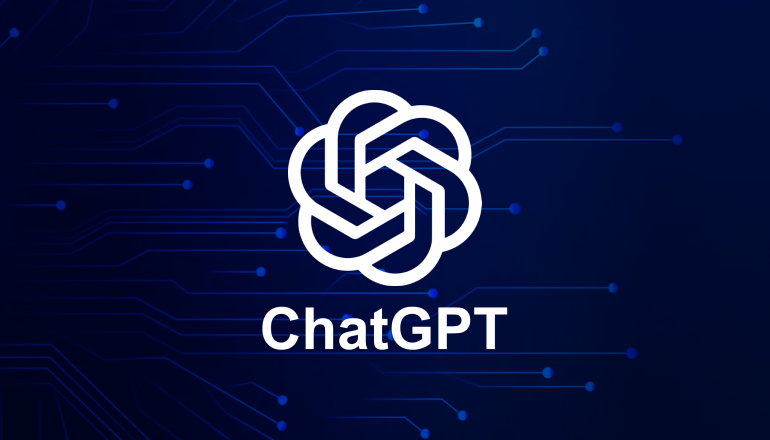ChatGPT is the most talked about tech topic these days. Experts anticipate that most customer support tasks will be performed by bots rather than humans in the near future. Wondering why?
These bots are designed to execute repetitive and simple tasks like booking an appointment or checking out from an online store. But guess what- ChatGPT, an AI-based program, is capable of much more! It can write poems or an essay and can even write code.
So, are you curious to know more about ChatGPT? We’ve got you covered; this blog post navigates you through its functions, capabilities, and limitations.
Understanding ChatGPT
Open AI, a research lab based in San Francisco, developed ChatGPT (Chat Generative Pre-Trained Transformer), which uses natural language processing (NLP) to respond to human queries.
Simply put, it is a “language machine” that indexes words, phrases, and sentences gathered from sources like training data, textbooks, and reinforcement learning to either answer queries, summarize any data or even write complex articles with exceptional speed and fluency.
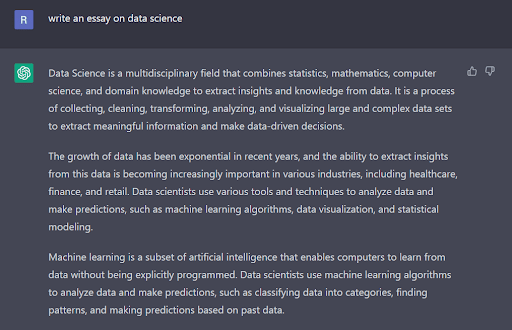
Models like Chat-GPT are trained to imitate written diction and update themselves from user inquiries. They can store what they have learnt for future use and improve their responses as you ask more questions.
The Technology of ChatGPT
From the outside, ChatGPT’s technology appears to be simple. Whenever you send a request or a question, the system responds instantly. But, in reality, this is a much more complicated technology than it appears.
With 175 billion parameters in size, ChatGPT is one of the largest language models ever trained, considering the rapid growth of other language models. Based on the “transformer” architecture, it can process substantial volumes of text to perform NLP tasks effectively.
Reinforcement learning allowed GPT algorithms to learn by trial and error, aiming for rewards just like humans would do by learning with positive feedback.
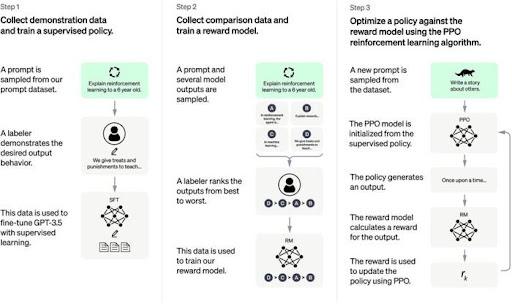
Step 1: In the first stage, a powerful language model was used and fine-tuned by supervised learning on conversation examples. They narrowed its potential strictly to conversations, making it better at conversing.
Step 2: The model was then trained on comparisons, and reinforcement learning, where it displayed multiple alternatives during human interactions, and a team member ranked these alternatives from best to worst.
Next, this information will be utilized to train a different model-a reward model learning-to mimic human annotators.
ChatGPT’s ability to evolve and improve over time is one of the key factors that sets it apart from other AI technologies. ChatGPT’s deep learning technology allows it to process and analyze inputs in a parallel manner.
Step 3: In the final step, this new reward model will provide feedback to the ChatGPT model’s responses as a reward function to help it converge toward the best answers over time.
ChatGPT’s Benefits: Enhanced Productivity And Creativity
ChatGPT offers many advantages that can revolutionize how we execute simple tasks. Here are some ways ChatGPT empowers users to take their productivity to the next level.
- Improved access to information: ChatGPT can provide quick and precise answers to a myriad of subjects, making it a helpful resource for those looking for information.
- Increased efficiency: It can automate repetitive tasks, thus freeing up user time and resources to concentrate on more challenging and creative work.
- Enhanced communication: Text-based content such as emails, summaries, and translations can be produced in a shorter duration, making communication more efficient and accessible.
- New platform for creative expression: ChatGPT can engage in conversations and generate creative text, providing a unique platform for creative expression and communication.
- Improved customer service: ChatGPT, when integrated into customer service systems, shortens waiting time and offers personalized responses to customer inquiries, thereby improving customer satisfaction.
In general, ChatGPT promises to boost productivity, simplify data exchange, and offer a new platform for collaboration and artistic expression.
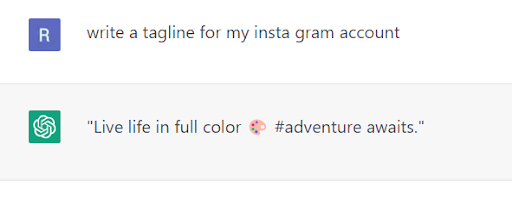
- Text Summary: Get a quick summary of an article in seconds.


- Language Translation: ChatGPT can smoothly translate text from one language to another.
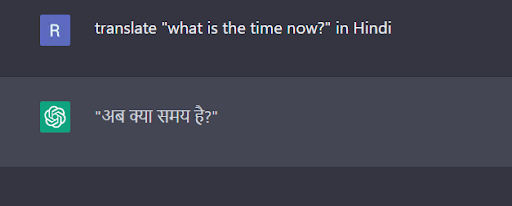
- Answering queries: ChatGPT is a valuable tool for information retrieval since it can respond to questions in natural language.

These are just a few instances, and users’ and developers’ creativity is the only constraint on what can be accomplished.
Some Fun facts of ChatGPT
ChatGPT is so versatile that even without specialized training, it successfully cleared exams from the law, business schools, and the prestigious United States Medical Licensing Examination (USMLE) in a single sitting.
Recently, when an employee asked the bot to write him a leave of absence letter along the lines of “not feeling the vibe,” in “Shashi Tharoor style, this is what the result was:
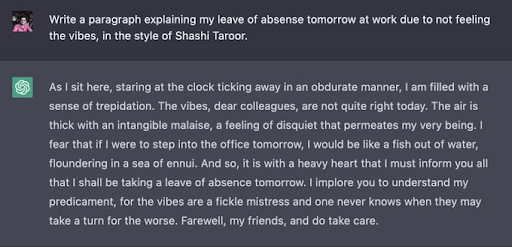
Source: Indiatimes
From serving as a virtual tutor to providing insights for decision-making, ChatGPT’s capabilities are truly endless.
Limitations of ChatGPT
Although the outstanding uses of ChatGPT make it attractive for anyone to start utilizing it in their daily jobs, we should also be aware of its shortcomings.
Not updated beyond 2021 Events
The software evidently knows very little about the world after 2021. It cannot respond to queries concerning recent events because it is unaware of the world leaders who have assumed office since 2021.
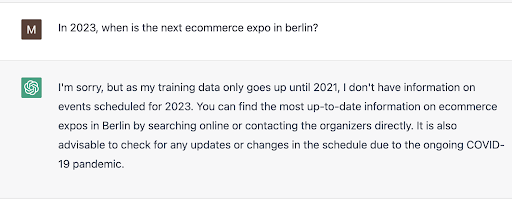
Can be unreliable and biased
ChatGPT may not always provide accurate data and thus cannot completely replace human intellect. Another downside is that it displays biases and can immediately become a source of confusion.
Lack of Originality
ChatGPT can produce text-based data, but it lacks the ability to think independently or with actual originality. It is limited to producing answers based on patterns found in training data.
Struggles with Unstructured Data
It works best with text-based data but may have trouble with unstructured data like photos and audio.
Ethics
Using ChatGPT and other AI language models involves serious ethical issues, including the risk of abuse or injury, privacy issues, and the effect on employment.
Alternatives to ChatGPT that are currently trending in the media
Since ChatGPT can do incredible things and has taken center stage in the IT arena, it’s easy to lose sight of the alternatives that could provide equal or even more value.
- Chatsonic
Chatsonic is powered by the same technology as ChatGPT (GPT 3.5), but it goes a step further and expands on ChatGPT’s features while addressing some of its flaws. While ChatGPT cannot retrieve data from the internet in real-time, Chatsonic outperforms ChatGPT by extracting information from Google’s Knowledge Graph to provide superior solutions that are more up-to-date and congruent with recent developments.
- Bard
Bard, created by Google, uses Language Model for Dialogue Applications as its core (LaMDA). Once it has completed all testing rounds, this AI tool will be officially accessible to the public in the upcoming weeks.
Its robust AI-powered capabilities will soon be pushed out in the Search option of Google, enabling users to compress complex material and numerous perspectives into easily digestible formats, allowing them to rapidly grasp the overall picture and learn more from the web.
- BERT
BERT, also developed by Google, has information retrieval and sentiment analysis capabilities. BERT, short for Bidirectional Encoder Representations from Transformers, is a machine-learning model trained on the English Wikipedia and BookCorpus databases.
Since Google’s BERT is deep bidirectional, it can predict incoming text. Open AI ChatGPT, on the other hand, is unidirectional.
Final Thoughts on ChatGPT
Since its debut, Chat GPT has made headlines and is poised to disrupt the tech industry. Whether it is for research, fun or quick access, ChatGPT comes in handy in many scenarios. With its ability to carry out human-like conversations, it can transform the customer service industry allowing 24/7 customer service with minimum human interaction.
However, it is crucial to understand that ChatGPT can sometimes be biased and inaccurate. Despite this, ChatGPT is still a promising advancement in the field of AI and a demonstration of how deep learning has the potential to advance the technologies we use every day. Our team of experts at Mobikasa where you can hire ecommerce developers, has successfully developed a few AI-based applications like chatbots for e-commerce websites that have the potential to improve the user experience, increase sales, and streamline business operations.
Frequently Asked Questions on ChatGPT
Is ChatGPT an open-source model?
ChatGPT is not an open-source model. Open AI makes its pre-trained models accessible, but the source code and design specifics are confidential.
Just how precise is ChatGPT?
ChatGPT can provide human-like responses quite accurately, but occasionally it can produce improper or biased replies. Therefore careful monitoring and use are essential.
Is ChatGPT OpenAI’s only language model?
OpenAI has created several different language models, such as GPT-3 and GPT-2.
Can ChatGPT write complex codes?
ChatGPT can generate code snippets to complete partially written code, however, it is not specifically designed for software coding. These code snippets can be used for learning or prototyping but not as a substitute for human programming expertise.
Which repetitive jobs can ChatGPT and other AI bots reduce?
AI bots can complete repetitive tasks like email compilation, cover letter authoring, and language translation in shorter durations.
